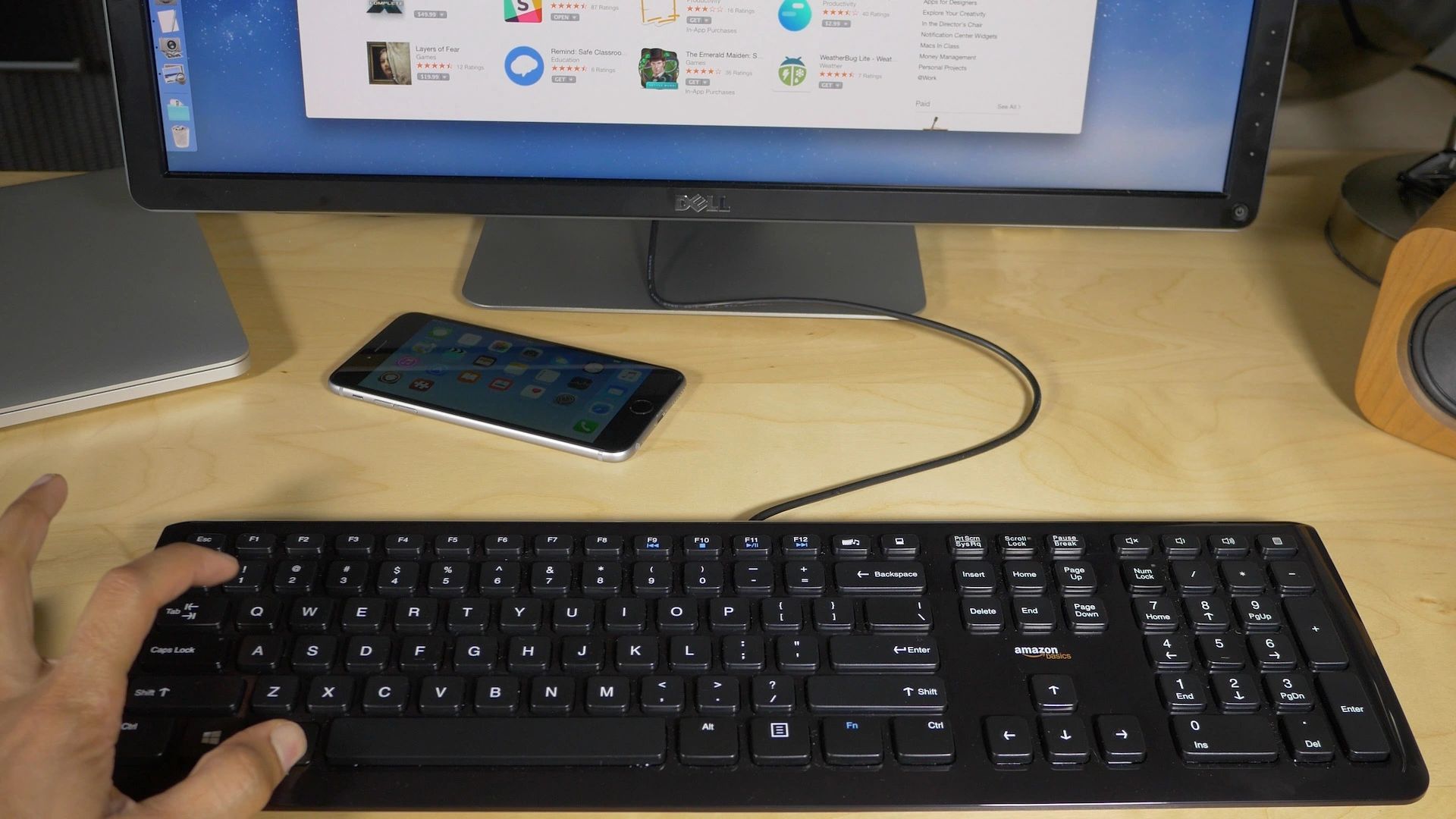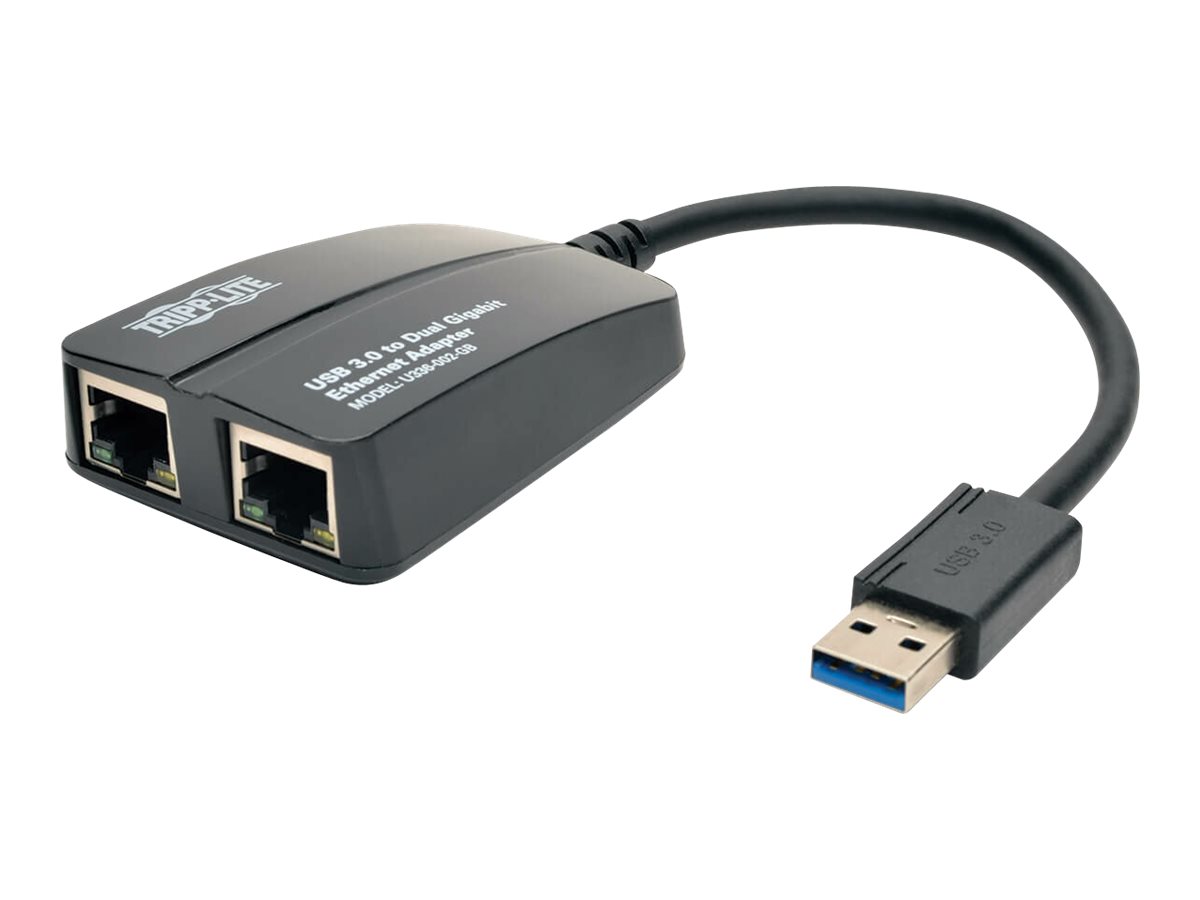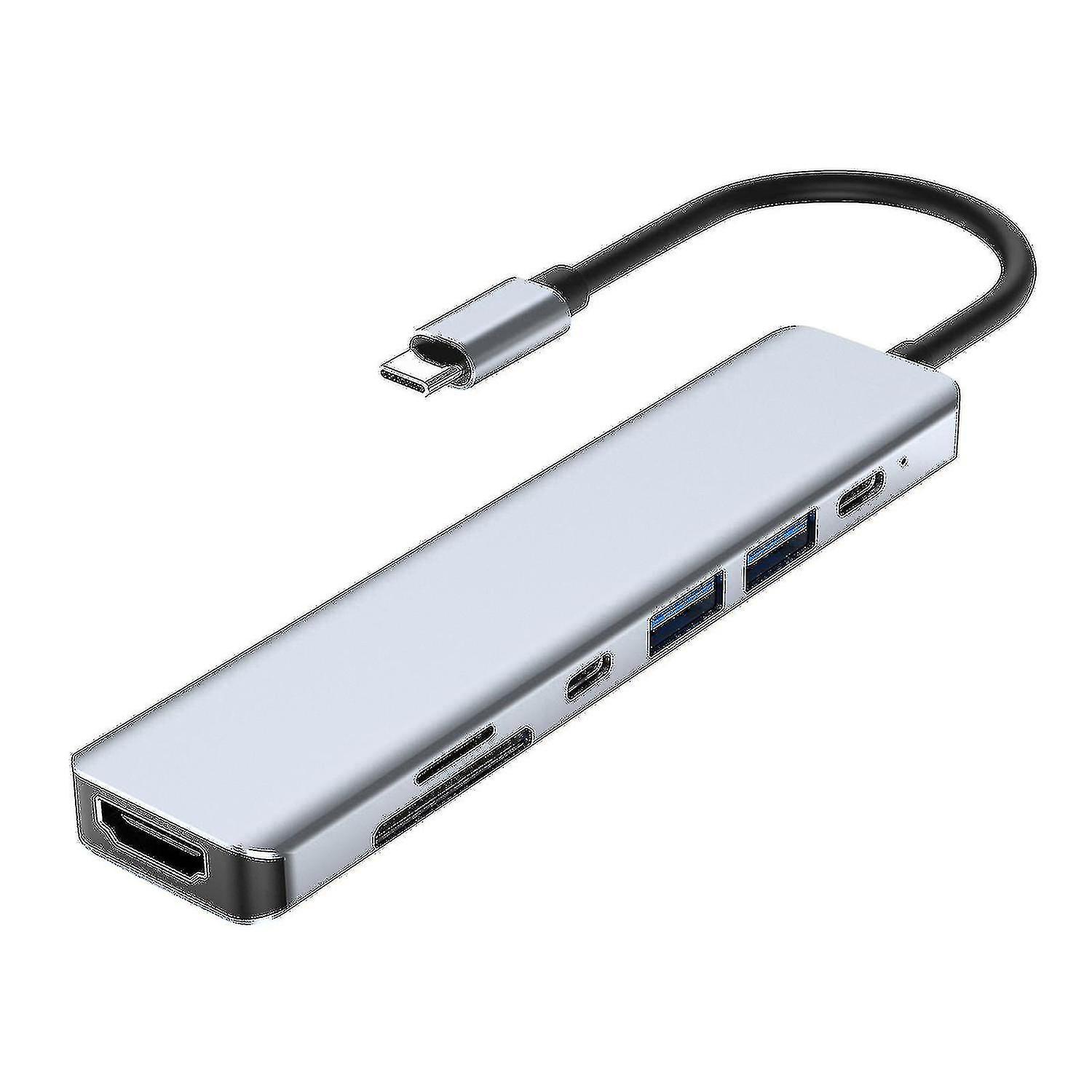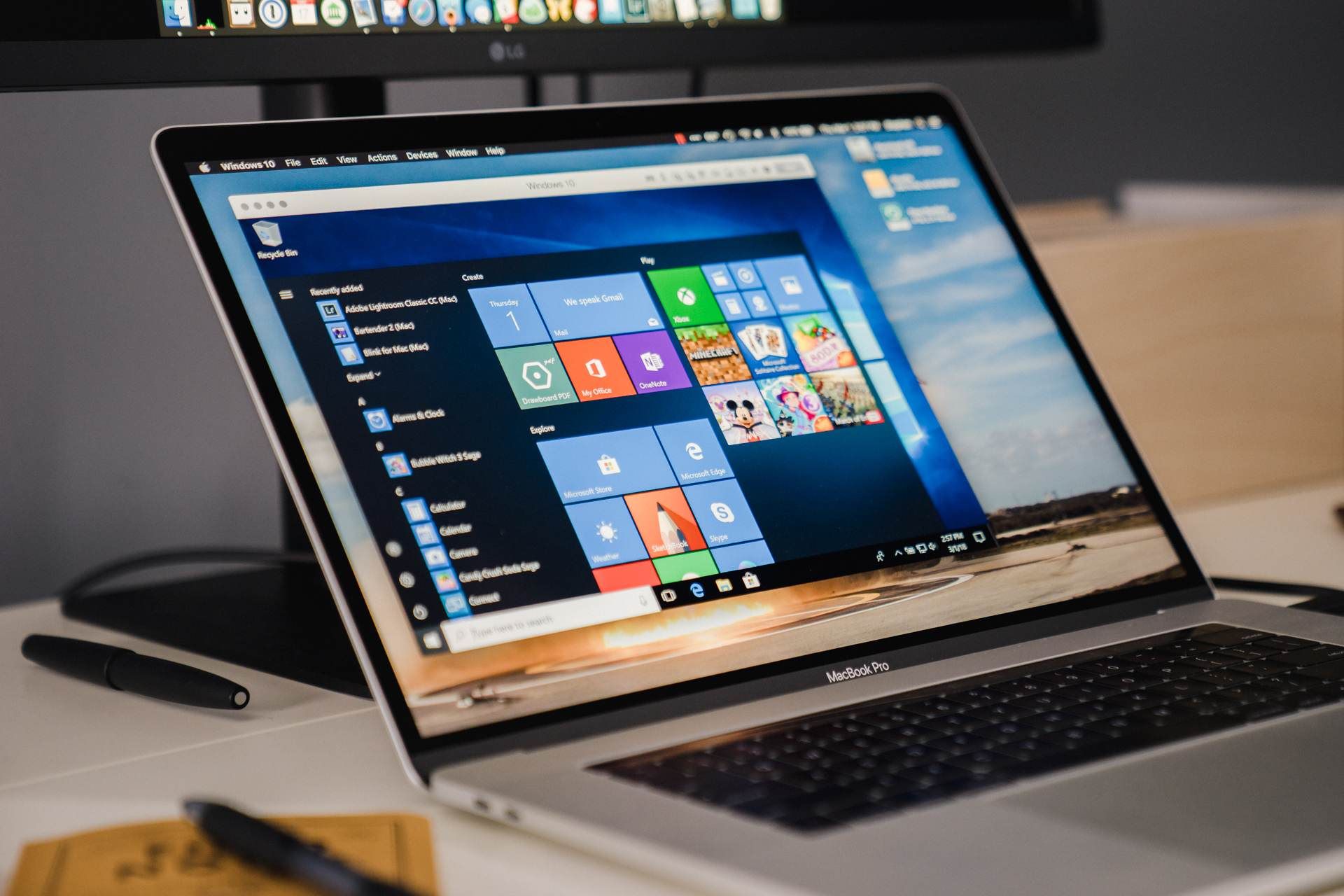Introduction
When it comes to multitasking on your Mac, being able to efficiently switch between different windows is key. Whether you’re working on a project, browsing the web, or simply navigating through various apps, having a smooth and seamless window switching experience can greatly enhance your productivity. In this article, we will explore the different methods you can use to switch between windows on your Mac and optimize your workflow.
Mac provides a range of built-in features and shortcuts that allow you to quickly move from one window to another, ensuring you have easy access to all your open applications and documents. From using keyboard shortcuts to leveraging various macOS features, you have the flexibility to choose the method that best suits your preferences and working style.
In the following sections, we will delve into the various ways you can switch between windows on your Mac, exploring features such as the Command key and Tab key combination, Mission Control, Exposé, keyboard shortcuts for specific applications, the Dock, and even third-party apps that enhance window management. By the end of this article, you will have a comprehensive understanding of the different strategies available, allowing you to streamline your workflow and navigate your Mac’s interface with ease.
Whether you are a long-time Mac user or a recent convert, mastering the art of window switching is essential for maximizing your productivity and efficiency. By utilizing the methods outlined in this article, you will be able to effortlessly transition between different windows, effortlessly juggling multiple tasks and applications on your Mac. So let’s dive in and discover the various techniques that will empower you to switch between windows seamlessly.
Overview of the Various Ways to Switch Between Windows on Mac
Mac provides a range of options to switch between windows, ensuring a smooth and efficient workflow. Here, we will provide an overview of the different methods available, each catering to different preferences and needs.
One of the most commonly used methods is the Command key and Tab key combination. This allows you to cycle through your open applications with ease. By pressing Command + Tab, a window will appear on your screen displaying icons of all open applications. Pressing Tab while holding down the Command key will move the selection to the next application, and releasing both keys will switch to the selected application. This method is quick and convenient, allowing you to switch between applications without lifting your hands off the keyboard.
An alternative method is by using Mission Control, a feature that showcases all open windows and spaces in a bird’s-eye view. By pressing the Mission Control key (F3 or Control + Up Arrow), you can view all your open windows at once, making it easy to locate and switch between them. This feature is especially helpful when you have multiple applications running simultaneously or when you use virtual desktops.
Exposé is another useful feature for window management. By pressing the Exposé key (F3) or using a four-finger swipe up on the trackpad, Exposé will display all open windows for the active application, allowing you to choose the specific window you want to switch to. This is particularly handy when you have multiple windows of the same application open and need to quickly access a specific document or window.
Many applications also have their own specific keyboard shortcuts for window switching. For example, in web browsers like Safari or Google Chrome, pressing Command + ` (the key above the Tab key) allows you to cycle through different tabs within the same window. Knowing these application-specific shortcuts can significantly speed up your workflow and streamline your window switching process.
The Dock is another convenient method for switching between windows. By clicking on an application icon in the Dock, all open windows for that application will be displayed, and you can easily select the desired window to bring it to the forefront. This method works well when you have a small number of open windows and want to quickly switch between them.
Lastly, there are third-party apps available that provide advanced window management features, allowing you to customize and control your window switching experience. These apps offer additional functionalities such as grid-based window snapping, custom shortcut configurations, and more. Examples of popular third-party apps include Magnet, BetterSnapTool, and Spectacle.
In this section, we have provided an overview of the different ways you can switch between windows on your Mac. Each method has its own advantages and caters to different preferences and working styles. By understanding these options, you can choose the method that best fits your needs and optimize your window switching efficiency.
Using the Command key and Tab key combination
One of the most popular and widely used methods for switching between windows on a Mac is by using the Command key and Tab key combination. This method allows you to quickly cycle through your open applications and switch to the desired window with just a few keystrokes.
To use this method, simply press and hold the Command key, which is identified by a ⌘ symbol, and then press the Tab key. A window will appear on your screen displaying icons of all your open applications. As you continue to hold down the Command key, you can press the Tab key multiple times to cycle through the icons and highlight different applications.
Once you have selected the desired application, release both the Command and Tab keys to switch to that application. This action brings the most recently used window of the selected application to the forefront, allowing you to continue your work seamlessly.
This Command key and Tab key combination is particularly useful when you have multiple applications open and want to switch between them without having to click through the Dock or use the Mission Control feature. It is a fast and efficient method, especially for those who prefer to navigate their Mac using keyboard shortcuts.
Furthermore, while holding down the Command key and cycling through the icons using the Tab key, you can also use the Shift key to cycle in reverse order. By pressing Command + Tab + Shift, you can move the selection in the opposite direction, allowing for even more flexibility in navigating through your open applications.
Additionally, if you have multiple windows open within a specific application, such as different documents or tabs in a web browser, you can continue to cycle through those windows by using the Command key and the ` key (the key above the Tab key) together. This allows you to quickly switch between different windows within the same application, further enhancing your productivity and multitasking abilities.
The Command key and Tab key combination is a versatile and efficient method for switching between windows on your Mac. It allows for quick navigation, especially for users who prefer keyboard shortcuts over other methods. By mastering this technique, you can effortlessly switch between applications and maintain a smooth and uninterrupted workflow.
Using Mission Control
Mission Control is a powerful feature on Mac that provides a bird’s-eye view of all your open windows and spaces. It allows you to switch between different applications and windows with ease, providing a visual overview of your desktop and enhancing your multitasking capabilities.
To access Mission Control, there are a few different methods you can use. The most common way is to press the Mission Control key, which is typically located at the top row of your keyboard and identified by a mission control icon or a square with three windows. By default, the key is either F3 or Control + Up Arrow. Alternatively, you can set up a hot corner or a keyboard shortcut in the Mission Control settings within System Preferences.
Once you activate Mission Control, your screen will transform, and you will see a tiled display of all your open windows and spaces. This allows you to have a comprehensive overview of everything that is currently happening on your Mac.
To switch between windows using Mission Control, you can simply click on the desired window or use your keyboard arrow keys to navigate and select the appropriate window. When you select a window, it will be brought to the forefront, making it the active window for you to work on.
One of the benefits of using Mission Control is that it also allows you to group windows by application. This means that if you have multiple windows of the same application open, they will be displayed as a stack, making it easier to manage and switch between them. Simply click on the stack to expand and view all the windows within that application.
Aside from switching between windows, Mission Control also allows you to create and manage spaces or virtual desktops. Spaces enable you to organize your windows into separate workspaces, each with its own set of windows. This can be particularly useful when you’re working on multiple projects or if you want to keep personal and work-related windows separate.
In addition to the standard Mission Control view, you can also customize how your windows are displayed by going into Mission Control preferences. You can choose to display windows in a grid or a fan layout, adjust the size of the thumbnails, and even enable or disable certain features to tailor the experience to your liking.
Mission Control is a valuable tool for efficiently managing and switching between windows on your Mac. Whether you have numerous applications open or use virtual desktops, Mission Control provides a seamless and intuitive method for navigating and organizing your workspace. By incorporating this feature into your workflow, you can enhance your productivity and effectively manage your desktop environment.
Using Exposé
Exposé is a macOS feature that offers a quick and convenient way to manage open windows, particularly when you have multiple windows open within the same application. With just a few simple gestures or keystrokes, Exposé enables you to view and switch between windows effortlessly.
To activate Exposé, there are a few different methods you can use. The most common way is to press the Exposé key, which is typically F3 on the keyboard. If you are using a trackpad, you can perform a four-finger swipe up gesture to trigger Exposé. These actions will instantly reveal all your open windows, making it easy to select the window you want to switch to.
When Exposé is activated, the screen will display all open windows in a scaled-down layout, allowing you to see the content of each window. This is especially useful when you have numerous windows open within the same application and need to quickly locate and select a specific document or window.
To switch between windows using Exposé, you can either click on the desired window or use your keyboard arrow keys to navigate and select the appropriate window. Once you have selected a window, it will be brought to the forefront, becoming the active window for you to work on.
In addition to viewing and switching between windows, Exposé also allows you to perform certain actions on windows. For example, you can right-click on a window to access a context menu with options like closing the window, minimizing it, or arranging it within the screen.
Exposé offers flexibility and customization options as well. In the System Preferences, you can adjust the settings to specify whether you want Exposé to display all windows or only the windows of the current application. This allows you to tailor the behavior of Exposé to fit your preferences and optimize your workflow.
Another useful variation of Exposé is called App Exposé. This feature is activated by right-clicking on an application icon in the Dock and selecting “Show All Windows.” App Exposé will then show all open windows for that specific application, making it easy to switch between different documents or instances of the app.
Using Exposé, you can efficiently manage and switch between windows, especially when working with multiple windows within the same application. The intuitive and visually appealing display of open windows allows for quick navigation and enhances your productivity. Incorporating Exposé into your workflow can streamline your window management and improve your multitasking abilities.
Using Keyboard Shortcuts for Specific Applications
Many applications on macOS come with their own set of keyboard shortcuts, allowing you to quickly navigate and switch between windows within that specific app. Understanding these application-specific keyboard shortcuts can significantly speed up your workflow and enhance your productivity.
For example, in web browsers such as Safari or Google Chrome, you can switch between tabs within the same window using the Command key and the bracket keys ([ and ]). Pressing Command + ] moves you to the next tab, while Command + [ takes you to the previous tab. This enables you to quickly switch between different web pages without the need to use other window-switching methods.
In text editors or word processors like Pages or Microsoft Word, you can use keyboard shortcuts to open, close, and switch between documents. For instance, pressing Command + O opens a new document, Command + W closes the current document, and Command + ` (the key above the Tab key) switches between different open documents within the application. These shortcuts streamline the process of managing multiple documents simultaneously.
Keyboard shortcuts can also be used in creative applications such as Photoshop or Final Cut Pro. These shortcuts allow you to efficiently switch between different tools and windows within the application, speeding up your editing process. For example, in Photoshop, pressing the Tab key hides or shows all palettes, allowing you to focus on your canvas without distractions. It’s always beneficial to explore the documentation or preferences of the specific application to discover the available shortcuts.
Discovering and memorizing keyboard shortcuts for the applications you frequently use can save you time and avoid the need to navigate through various windows or menus. Most applications have a dedicated “Keyboard Shortcuts” or “Preferences” section, where you can view and customize the available shortcuts to suit your workflow.
By leveraging these application-specific shortcuts, you can navigate and switch between windows effortlessly, staying focused on your work and improving your productivity. Take the time to familiarize yourself with the shortcuts in the applications you use frequently, and you’ll find that your workflow becomes smoother and more efficient.
Using the Dock
The Dock is a central feature of macOS that provides quick access to your most frequently used applications, files, and folders. In addition to launching applications, the Dock can also be used as a convenient method to switch between windows.
When an application is open, its icon is displayed in the Dock. To switch to a specific window of that application, simply click on the application’s icon in the Dock. This action reveals a menu of all the open windows for that application. From here, you can select the window you want to switch to, and it will be brought to the forefront.
Using the Dock to switch between windows is particularly useful when you have a small number of open windows within an application. It provides a visual representation of all your open windows, allowing you to easily select the one you need without having to cycle through multiple windows.
If you have multiple windows open within the same application, clicking and holding down on the application icon in the Dock will display thumbnails of all the open windows. You can then move your cursor over the desired window and release the click to switch to it. This is especially handy for applications like Finder or Safari, where you might have multiple windows open and want to navigate between them quickly.
In addition to being a window-switching tool, the Dock also allows you to access recently used files and folders. By right-clicking (or Control-clicking) on an application icon in the Dock, you can access a list of recently opened documents or files associated with that application. This provides another way to switch between different files within an application by selecting them directly from the context menu.
To customize the behavior and appearance of the Dock, you can access its preferences. From the System Preferences, you can adjust settings like the size of the Dock, its positioning on the screen, and whether it automatically hides or remains visible all the time. These customization options allow you to tailor the Dock to your personal preferences and workflow.
The Dock is an integral part of the macOS user interface, offering a convenient way to switch between windows and access frequently used applications and files. By utilizing the features and customization options available, you can enhance your productivity and streamline your workflow on your Mac.
Using Third-Party Apps for Window Management
While macOS provides built-in features for window management, there are also third-party apps available that offer additional functionalities and customization options. These apps can enhance your window-switching experience and provide advanced features to optimize your workflow.
One popular category of third-party apps for window management is window snapping. These apps allow you to easily organize and resize windows by snapping them to specific areas or grids on your screen. By dragging a window to a specific position or using keyboard shortcuts, you can quickly arrange windows side by side or in a grid layout. This is particularly useful when working with multiple windows or when multitasking on a smaller screen.
Another common feature offered by third-party apps is the ability to manage virtual desktops or workspaces. These apps allow you to create and switch between multiple desktops, each with its own set of applications and windows. This is especially beneficial when you have different projects or workflows that require separate environments. By seamlessly switching between virtual desktops, you can stay organized and focused on your tasks with minimal distractions.
Furthermore, some third-party apps offer advanced window switching capabilities. For example, they may provide keyboard shortcuts to switch between windows of different applications or within the same application. These shortcuts can be customized to fit your preferences, allowing you to navigate through your open windows with ease.
In addition to these features, third-party apps often offer various customization options to enhance your window management experience. You can typically tweak settings such as animation effects, hotkeys, and specific window behaviors to suit your workflow and personal preferences.
Some popular third-party apps for window management include Magnet, BetterSnapTool, and Spectacle, among others. These apps have garnered positive feedback from users and provide a range of features to improve your window-switching experience on macOS.
Before installing any third-party app, it is important to conduct research and read user reviews to ensure compatibility and reliability. It is also recommended to download apps from trusted sources, such as the Mac App Store or reputable developer websites, to minimize security risks.
By using third-party apps for window management, you can tailor your window-switching experience to your specific needs and preferences. These apps provide additional functionalities and customization options that can greatly enhance your productivity and efficiency when working with multiple windows or virtual desktops on your Mac.
Conclusion
Efficiently switching between windows is essential for maximizing your productivity and streamlining your workflow on a Mac. Fortunately, macOS provides a variety of built-in features and shortcuts to facilitate window management. From using the Command key and Tab key combination to leveraging Mission Control, Exposé, keyboard shortcuts, and the Dock, there are multiple ways to seamlessly navigate and switch between different windows and applications.
Furthermore, third-party apps offer additional functionalities and customization options to enhance your window management experience. These apps can provide features such as window snapping, virtual desktops, and advanced window switching capabilities, allowing you to tailor your workflow to your specific needs and preferences.
By mastering these window-switching techniques and utilizing the tools available to you, you can increase your productivity and efficiency when working on your Mac. Whether you prefer the speed and convenience of keyboard shortcuts or the visual appeal of Mission Control or Exposé, finding the method that works best for you will greatly enhance your multitasking abilities and make navigating your Mac’s interface a breeze.
Remember to explore the preferences and settings of the apps and features you use regularly to further customize your window management experience. By doing so, you can optimize your workflow, minimize distractions, and focus on the tasks at hand.
In conclusion, becoming proficient in window switching on your Mac will help you save time, stay organized, and improve your overall productivity. Experiment with different methods, fine-tune your preferences, and find what works best for your unique needs. With the knowledge gained from this article, you are well-equipped to navigate your Mac’s interface like a pro.

























